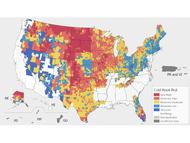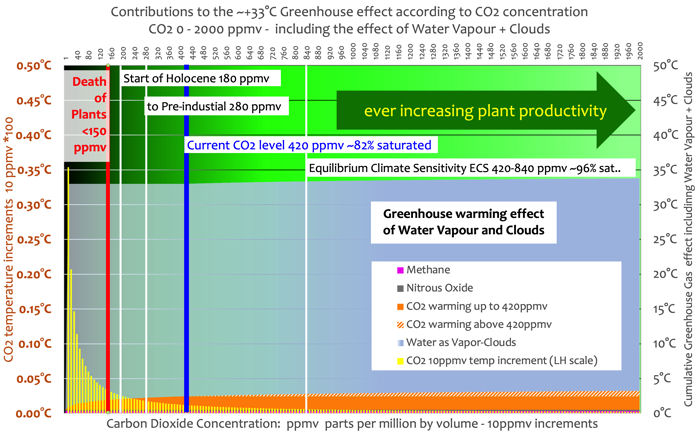The UN Framework Convention on Climate Change Conference of the Parties 21 (COP21) in Paris, France produced the Paris Accords, a non-binding agreement under which the participating nations agreed to take actions necessary to achieve a goal of Net Zero CO2 emissions by 2050. The developed nations of the world have undertaken various efforts to proceed toward that goal and have reduced their CO2 emissions with varying levels of success over the past 9 years. However, global annual CO2 emissions have continued to increase, largely due to rapid growth in fossil fuel consumption in the developing nations, led by China, India and Indonesia among others.
The continuing increases in global CO2 emissions have made it obvious that the globe is not going to achieve Net Zero by 2050. However, the developed nations are now beginning to realize that they are not going to achieve Net Zero by 2050 either. Their efforts so far have increased government debt, increased electricity prices, spread energy poverty, threatened the reliability of their electric grids, encouraged de-industrialization and left them flailing around seeking workable solutions.
It has become increasingly clear that, while the developed nations adopted the Net Zero by 2050 goal, none of them have developed a detailed plan to achieve the goal, nor have any of them analyzed in detail the cost of achieving the goal. Also, none of them has demonstrated that the transition to renewable generation they are pursuing would lead to a stable, reliable and economical energy economy. In spending hundreds of billions of dollars in pursuit of the goal without a plan or a demonstration, they have clearly “put the cart before the horse”.
Several individuals and organizations have suggested demonstration programs to no avail. More recently it has been suggested that rigorous engineering planning efforts might substitute for demonstration programs. Such engineering plans would begin with an analysis of the projected load on each grid in 2050 after an all-electric transition, with an allowance for market growth and economic development. The planning teams would then analyze the current grid and the generation which serves it and would be replaced, identifying areas where new generation capacity could be installed and the transmission enhancements necessary to move the output of the new generation to market. The planners would then determine the technology mix and capacity of the new generation assets to be installed.
The generation technologies evaluated would include intermittent renewable generators such as solar and wind, as well as dispatchable generators such as nuclear, hydro and geothermal. The intermittent generation capacity would require procurement and installation of storage capacity sufficient to render the intermittent generation dispatchable or installation of additional dispatchable capacity sufficient to replace the output of the intermittent generators when they were unavailable.
Storage technologies to be evaluated would include short-duration, medium-duration and long-duration battery storage, pumped hydro and Green Hydrogen. This component of the planning process would be greatly complicated by the fact that medium-duration and long-duration battery storage systems are not currently available, that pumped hydro systems are very location specific and subject to significant local resistance, and that no plan for the production, transmission, storage and utilization of Green Hydrogen currently exists.
The planning process would then prepare a detailed schedule for the transition. Each new generation site would be identified, the generation technologies to be sited there determined, their capacity established, the transmission interconnection designed and the cost of the installed and interconnected capacity calculated. An installation schedule which replaced the existing generation and kept pace with demand and consumption growth resulting from the all-electric transition would be prepared. Transmission and distribution system enhancements to accommodate the new generation and storage capacity installations and the anticipated load growth would be scheduled and costed.
I believe that such detailed plans, developed by corporations experienced with utility construction projects would determine that achieving Net Zero by 2050 reliably and economically in the developed nations would be as implausible as it is unnecessary.
“A goal without a plan is just a wish.”, Antoine de St. Exupery
 The Right Insight is looking for writers who are qualified in our content areas. Learn More...
The Right Insight is looking for writers who are qualified in our content areas. Learn More...















